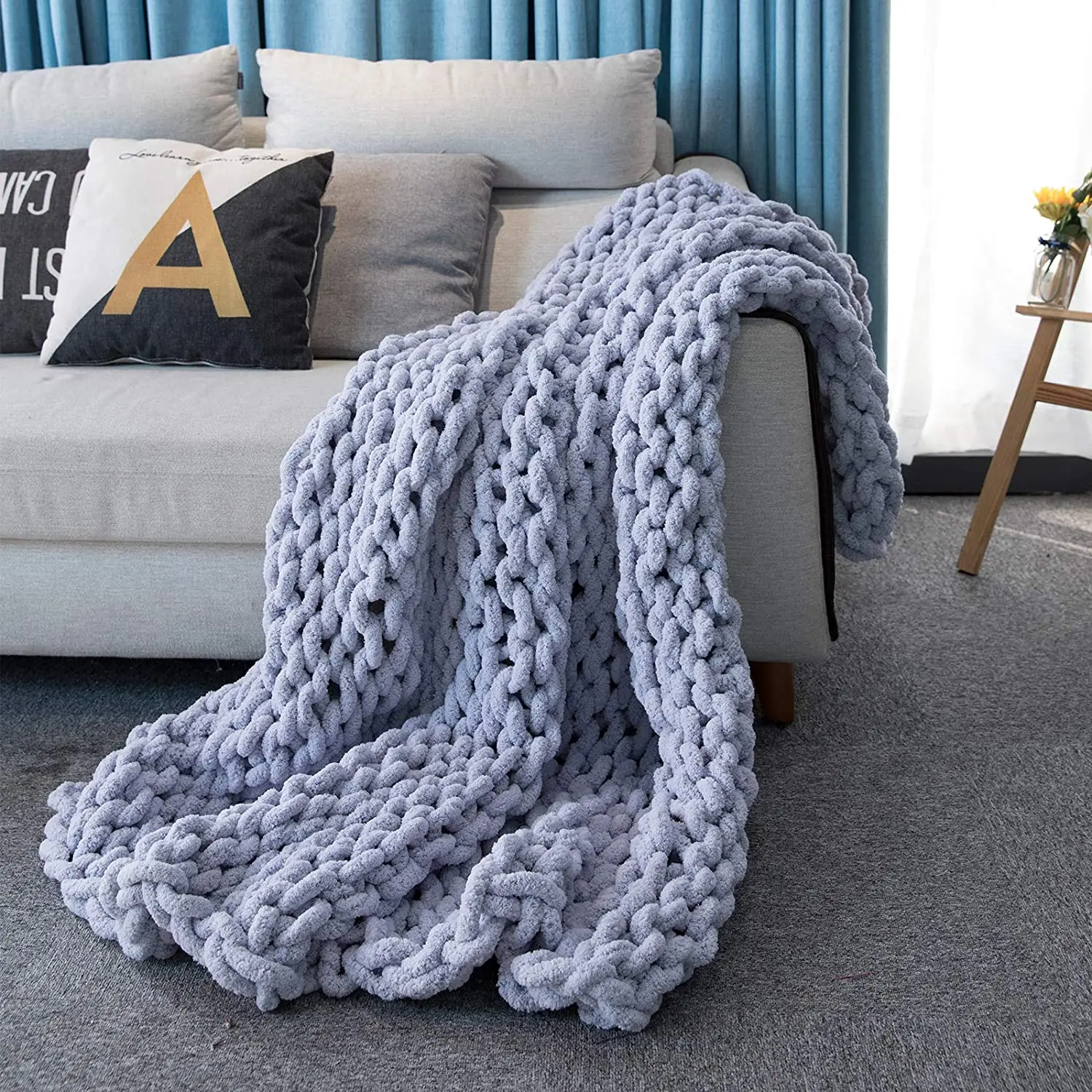
Knitting has become increasingly popular in recent years, and it’s no wonder why. Not only is it a great way to relax and unwind, but knitting also allows you to create beautiful and practical items for yourself and your loved ones. One popular project that many knitters are tackling is a knitted weighted blanket.
A weighted blanket is a type of blanket that is filled with evenly distributed weights, such as plastic pellets or glass beads. The added weight provides a gentle pressure that can help promote relaxation and alleviate anxiety and stress. While there are many ready-made options available for purchase, knitting your own weighted blanket gives you the ability to customize it to your specific needs and preferences.
Creating a knitted weighted blanket may seem like a daunting task, but with the right pattern and a little patience, it’s definitely achievable. There are a variety of patterns available that range in difficulty, so you can choose one that matches your skill level. Whether you’re a beginner or an experienced knitter, you’ll be able to find a pattern that suits you.
How to Knit a Weighted Blanket: A Comprehensive Guide
If you’re looking for a cozy and comforting project to knit, a weighted blanket might just be the perfect option. Not only do these blankets provide warmth and softness, but the added weight can also promote a sense of relaxation and calmness. In this comprehensive guide, we’ll walk you through the steps of knitting your very own weighted blanket.
1. Choose the Right Yarn and Needles: Start by selecting a yarn that is both soft and sturdy. Look for a bulky or super bulky weight yarn that will create a thick and cozy blanket. Additionally, choose needles that are appropriate for the yarn thickness, such as size US 13 or US 15.
2. Determine the Size and Weight: Measure the desired dimensions for your blanket. Weighted blankets typically range from 10 to 25 pounds, so consider the weight you find most comforting. Keep in mind that the heavier the blanket, the more yarn you’ll need to complete it.
3. Cast On and Knit the Base: Start by casting on the desired number of stitches for the width of your blanket. Knit in your chosen stitch pattern until you reach the desired length for the base. This will be the foundation of your weighted blanket.
4. Add the Weight: To create the weighted effect, you’ll need to incorporate pockets or compartments into your blanket. These can be made by knitting separate pieces and sewing them onto the base. Fill the pockets with poly pellets or other weighted objects, making sure to distribute the weight evenly.
5. Finishing Touches: Once you have added the weight, continue knitting the rest of the blanket to the desired length. When you reach the end, bind off the stitches and weave in any loose ends. If desired, you can also add a border or edging to further enhance the aesthetic appeal of your weighted blanket.
By following these steps, you’ll be able to knit your very own weighted blanket that is both functional and comforting. Whether you’re knitting for yourself or as a special gift, this project is sure to provide warmth and relaxation for years to come.
The Benefits of a Weighted Blanket
A weighted blanket is a specially designed blanket that is filled with small weighted objects, such as glass beads or plastic pellets. It is typically heavier than a regular blanket and is believed to provide a range of benefits for individuals who use it.
1. Deep Pressure Stimulation: One of the main benefits of a weighted blanket is deep pressure stimulation. The gentle, evenly distributed pressure from the blanket can mimic the sensation of being hugged or held, which may help promote relaxation and reduce anxiety. This can be particularly beneficial for individuals with sensory processing disorders or those who struggle with anxiety or insomnia.
2. Improved Sleep Quality: Using a weighted blanket during sleep can help improve sleep quality. The deep pressure stimulation from the blanket can help regulate the production of serotonin and melatonin, which are hormones that promote relaxation and sleep. As a result, individuals may experience a deeper, more restful sleep, and wake up feeling refreshed and rejuvenated.
3. Reduced Stress and Anxiety: Weighted blankets can also help reduce stress and anxiety. The comforting pressure from the blanket triggers the release of oxytocin, a hormone that helps calm the nervous system and promote feelings of security and well-being. This can be particularly beneficial for individuals who experience chronic stress or suffer from anxiety disorders.
4. Improved Focus and Attention: Some individuals find that using a weighted blanket can help improve focus and attention. The deep pressure stimulation can provide a grounding effect, helping to calm a busy mind and improve concentration. This can be particularly helpful for individuals with ADHD or other attention-related difficulties.
5. Pain Relief: Weighted blankets can also provide pain relief for individuals with chronic pain conditions, such as fibromyalgia or arthritis. The gentle pressure from the blanket can help stimulate the production of endorphins, the body’s natural painkillers, and alleviate discomfort.
In summary, weighted blankets offer a range of benefits, including deep pressure stimulation, improved sleep quality, reduced stress and anxiety, improved focus and attention, and pain relief. Whether you are looking to improve your sleep, reduce stress, or simply experience the comforting sensation of deep pressure, a weighted blanket may be worth considering.
Choosing the Right Yarn and Needles for a Weighted Blanket
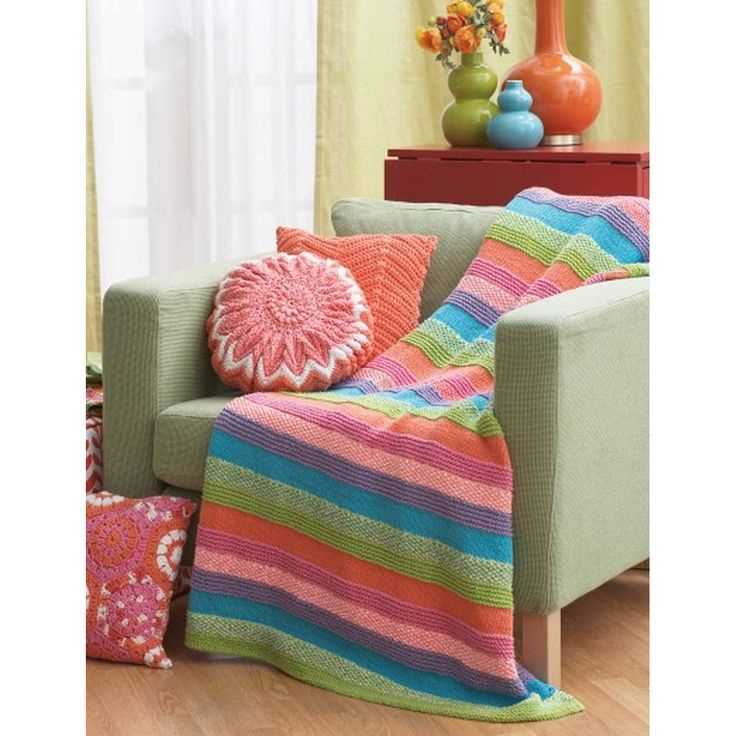
When it comes to knitting a weighted blanket, choosing the right yarn and needles is essential for creating a cozy and functional blanket. The weight of the blanket is an important factor to consider, as it affects how comforting the blanket feels.
Yarn: When selecting yarn for a weighted blanket, it’s best to choose a sturdy, durable option that can withstand the added weight. A thick, bulky yarn is ideal, as it will create a blanket that feels substantial and provides a sense of security. Additionally, using a yarn with natural fibers, such as wool or cotton, can offer breathability and regulate temperature, ensuring a comfortable sleeping experience.
Needles: When knitting a weighted blanket, using the right needles can make a difference in the overall outcome. The size of the needles will depend on the desired gauge and stitch pattern. For a dense and cozy blanket, larger-sized needles, such as 10 mm or larger, can be used to create larger stitches and a looser fabric. Alternatively, if a tighter and more compact blanket is desired, smaller-sized needles can be used. It’s essential to consider the weight of the blanket when selecting needles, as heavier blankets may require stronger and more durable needles to support the added tension.
Overall, choosing the right yarn and needles for a weighted blanket is crucial to creating a blanket that not only looks beautiful but also offers the desired weight and comfort. By selecting a sturdy yarn and appropriate needle size, you can ensure that your knitted weighted blanket will be a cozy addition to your home.
Calculating the Size and Weight of Your Blanket
When creating a knitted weighted blanket, it is important to calculate the size and weight of the blanket in order to ensure that it provides the desired therapeutic benefits. The size of the blanket will be determined by the dimensions of the individual who will be using it, as well as any specific preferences they may have. The weight of the blanket is typically determined based on a percentage of the individual’s body weight.
To determine the size of the blanket, you will need to measure the width and length of the individual who will be using it. This can be done by using a measuring tape to measure from shoulder to shoulder for the width, and from the top of the head to the toes for the length. Alternatively, you can use an existing blanket or quilt as a reference. Once you have these measurements, you can adjust them as needed to create a blanket that is the perfect size for the individual.
Calculating the weight of the blanket involves determining the ideal percentage of the individual’s body weight to be used. This percentage is typically between 8-12% of the individual’s body weight, but it may vary depending on their personal preferences and needs. To calculate the weight, simply multiply the individual’s body weight by the desired percentage (e.g., 10% of a 150-pound individual would be 15 pounds). Keep in mind that the weight should be evenly distributed throughout the blanket for optimal comfort and effectiveness.
By carefully calculating the size and weight of your knitted weighted blanket, you can ensure that it provides the right amount of pressure and coverage to promote relaxation and comfort. It is always recommended to consult with the individual who will be using the blanket to determine their specific needs and preferences before starting the knitting process.
Getting Started: Casting On and Knitting the First Rows
Before you can begin knitting your weighted blanket, you’ll need to cast on the required number of stitches. The pattern will provide you with the specific number of stitches you need, depending on the size of the blanket you’re making. To cast on, start by making a slip knot with your yarn. Insert the needle into the loop of the slip knot and tighten it onto the needle. Hold the needle with the slip knot in your right hand and the working yarn in your left hand.
Next, to begin the first row, hold the needle with the slip knot in your right hand and insert it into the first stitch on your left needle, going from left to right. Wrap the working yarn around the right needle, moving from back to front. Use the right needle to pull the working yarn through the first stitch, creating a new stitch on the right needle. Slip the original stitch off your left needle, and you now have one stitch on your right needle.
To continue knitting the first row, repeat these steps for each stitch on your left needle until you reach the end. Pay attention to the tension of your stitches, making sure they’re neither too loose nor too tight. As you knit, the fabric of your blanket will begin to grow, and you’ll gradually see the pattern taking shape.
Depending on the pattern you’re following, the first few rows might require specific stitches or techniques. Make sure to carefully read and follow the instructions provided in the pattern. Once you’ve completed the first row, you can continue knitting the subsequent rows in the pattern until you reach the desired length for your knitted weighted blanket.
Creating the Weighted Sections: Incorporating Weights into the Blanket

When making a knitted weighted blanket, one of the most important steps is to incorporate the weights into the blanket. This process involves strategically placing pockets within the knitted fabric where the weights can be inserted. The placement and distribution of these pockets determine the overall weight distribution of the blanket, so it’s crucial to plan and execute this step carefully.
To create the weighted sections, you can follow these steps:
- Choose the type of weights: There are various types of weights that can be used for a knitted weighted blanket, such as glass beads, plastic pellets, or even small metal objects. Consider the desired weight and the washability of the weights when choosing the type.
- Determine the size and number of pockets: Decide on the size and number of pockets based on the desired weight distribution. For example, if you want a uniformly distributed weight, you may opt for smaller pockets placed evenly throughout the blanket. Alternatively, if you prefer concentrated weight in certain areas, larger pockets can be strategically positioned.
- Create the pockets: Knit the blanket as per the pattern until you reach the point where the first pocket needs to be inserted. On the wrong side of the fabric, knit a separate pocket using a smaller needle size. This pocket can be created by knitting a rectangle or a square using a simple stitch pattern.
- Secure the pocket: Once the pocket is complete, flip the knitted fabric to the right side, and with the wrong side-facing, align the pocket with the desired location. Use a tapestry needle and yarn to sew the sides and bottom of the pocket to the knitted fabric securely. Leave the top edge open for inserting the weights.
- Insert the weights: Carefully pour the desired amount of weights into the open pocket. For ease of filling, you can use a funnel or a small scoop. Be mindful not to overfill the pocket, as this can affect the integrity of the knitting and make the blanket less comfortable.
- Close the pocket: Once the weights are inserted, use a tapestry needle and yarn to neatly close the open edge of the pocket. Make sure to secure the closure tightly so that the weights don’t shift during use.
By following these steps, you can successfully incorporate weights into your knitted blanket and achieve the desired weight distribution. Remember to test the blanket for comfort and adjust the weight distribution if necessary before completing the remainder of the knitting process.
Continuing the Knitting Pattern: Adding Rows and Maintaining Consistency
In order to continue your knitted weighted blanket pattern, you will need to add more rows to your work. It is important to maintain consistency and follow the established pattern to ensure that your blanket turns out as desired. Here are some tips to help you with this process:
1. Read the pattern carefully: Before you start adding more rows, take the time to carefully read through the pattern instructions. Make sure you understand each step and are familiar with any special stitches or techniques that may be required.
2. Keep track of your rows: To maintain consistency, it is helpful to keep track of the number of rows you have completed. You can use a row counter, a pencil and paper, or even a digital tracker to help you keep count. This will ensure that each section of your blanket is the same length and that your overall pattern remains intact.
3. Check your gauge: It is always a good idea to periodically check your gauge as you continue knitting. This will help you determine if you are knitting at the correct tension and if your blanket is turning out as expected. If your gauge is off, you may need to adjust your needle size or tension to ensure that your blanket ends up the right size.
4. Take breaks and rest your hands: Knitting a large project like a weighted blanket can be taxing on your hands and wrists. It is important to take regular breaks and rest your hands to prevent fatigue and strain. This will not only make the knitting process more enjoyable, but it will also help you maintain consistent tension throughout your work.
5. Enjoy the process: Lastly, remember to enjoy the process of knitting your weighted blanket. Knitting can be a relaxing and therapeutic activity, so take the time to savor each stitch and appreciate the progress you are making. As long as you follow the pattern and maintain consistency, you will be rewarded with a beautiful and cozy blanket at the end.
Finishing Off the Blanket: Binding Off and Securing Loose Ends
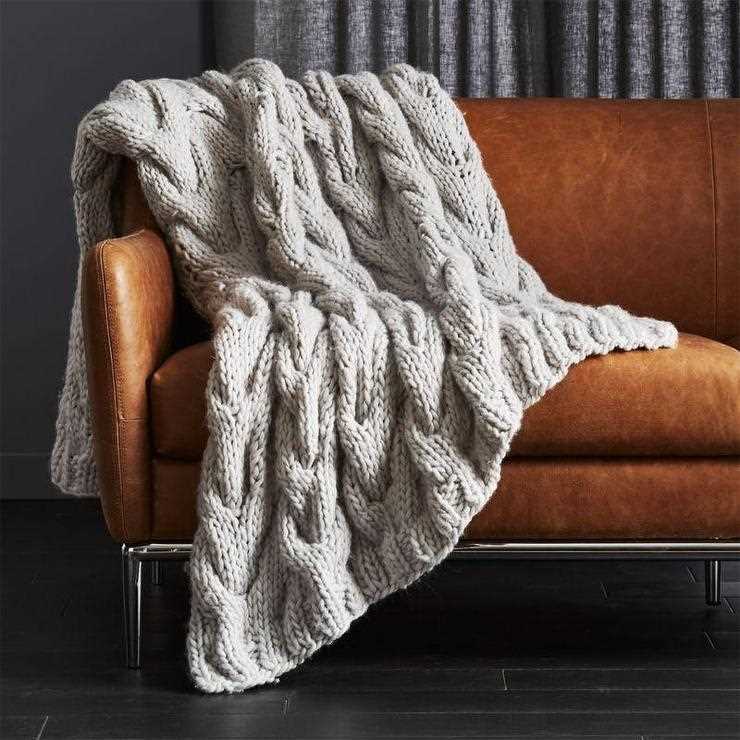
Once you have finished knitting your weighted blanket, it’s time to bind off and secure any loose ends to ensure a clean and polished look. Binding off is the process of closing the stitches at the end of your work, preventing them from unraveling. Here are the steps to successfully bind off your knitted weighted blanket:
- Knit the first two stitches: Start by knitting the first two stitches of your final row.
- Pass the first stitch over the second: Slip the first stitch from the right needle over the second stitch, moving it completely off the needle. This binds off one stitch.
- Knit the next stitch: Knit the next stitch on the left needle.
- Repeat the process: Continue knitting one stitch, then passing the previous stitch over until you reach the end of the row.
- Cut the yarn and secure the last stitch: Once you have bound off all the stitches, cut the yarn, leaving a long tail. Thread the tail through the last stitch and pull tight to secure.
After binding off, you may have loose ends from joining yarns or changing colors during the knitting process. To secure these loose ends, you can use a yarn needle to weave them into the fabric. Here’s how:
- Thread the loose end onto a yarn needle: Choose a yarn needle with a large enough eye to accommodate the thickness of your yarn. Thread the loose end through the eye of the needle.
- Weave the end into the fabric: Starting from the back of the work, insert the needle under several stitches in the same direction as the knitted rows. Avoid pulling too tightly to prevent distorting the fabric.
- Repeat in a different direction: Turn the needle and weave the loose end in a different direction, going under several stitches again. This helps to further secure the yarn and prevent unraveling.
- Trim any excess: Once you have woven the loose end in multiple directions, trim the excess yarn, leaving a small tail.
By following these steps, you can effectively bind off your knitted weighted blanket and secure any loose ends, ensuring a finished product that is both functional and aesthetically pleasing. Take your time and pay attention to detail, as these final steps can greatly contribute to the overall quality of your blanket.
Adding the Final Touch: Blocking and Stretching Your Knit Weighted Blanket
After spending hours knitting your weighted blanket, it’s important to add the final touch by blocking and stretching it. Blocking is a process that involves wetting the knitted fabric and then shaping it to the desired dimensions. This helps to even out the stitches, improve the drape, and give the blanket a professional finish.
1. Prepare the blanket: Before blocking, make sure to read the care instructions for the yarn you used. Some yarns may require a specific blocking method or a gentle hand wash. Lay your blanket flat on a clean surface and remove any loose threads or debris.
2. Wet blocking: To wet block the blanket, fill a basin or sink with lukewarm water and add a mild detergent suitable for delicate fabrics. Gently submerge the blanket and let it soak for about 15 to 20 minutes. Avoid agitating or wringing the blanket as this may cause felting or stretching. Drain the water and gently squeeze out excess moisture, being careful not to distort the shape of the blanket.
3. Shaping and stretching: Lay out a clean towel or blocking mat on a flat surface. Place the wet blanket on the towel and use your hands to carefully stretch and shape it to the desired dimensions. Pay special attention to the edges and corners to ensure they are straight and even. Use blocking pins or T-pins to secure the edges if necessary.
4. Allow to dry: Leave the blanket to dry completely in a well-ventilated area, away from direct sunlight or heat sources. This may take a day or two, depending on the thickness of the blanket and the surrounding humidity. Avoid hanging the blanket to dry, as this may cause it to stretch under its own weight.
5. Final touches: Once the blanket is dry, remove the blocking pins or T-pins and gently pat the blanket to fluff up the stitches. Trim any loose threads if necessary. Your knitted weighted blanket is now ready to be used or gifted, with its stitches beautifully defined and the drape perfectly enhanced.
Alternative Patterns and Techniques for a Knit Weighted Blanket
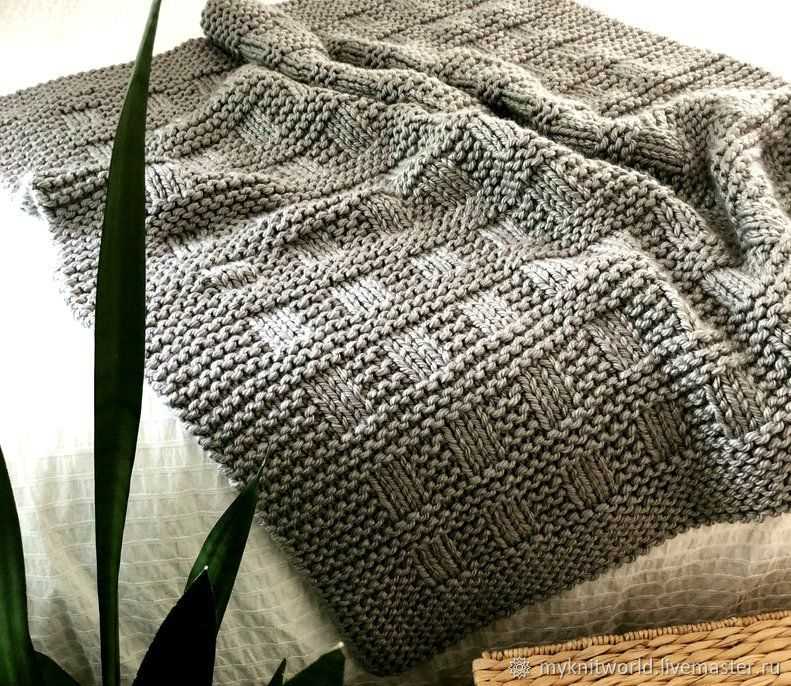
Knitting a weighted blanket can be a therapeutic and comforting project, but there are alternative patterns and techniques that can provide different textures and designs. These variations can add uniqueness to your blanket and enhance its overall aesthetic appeal.
Cable Knit Weighted Blanket
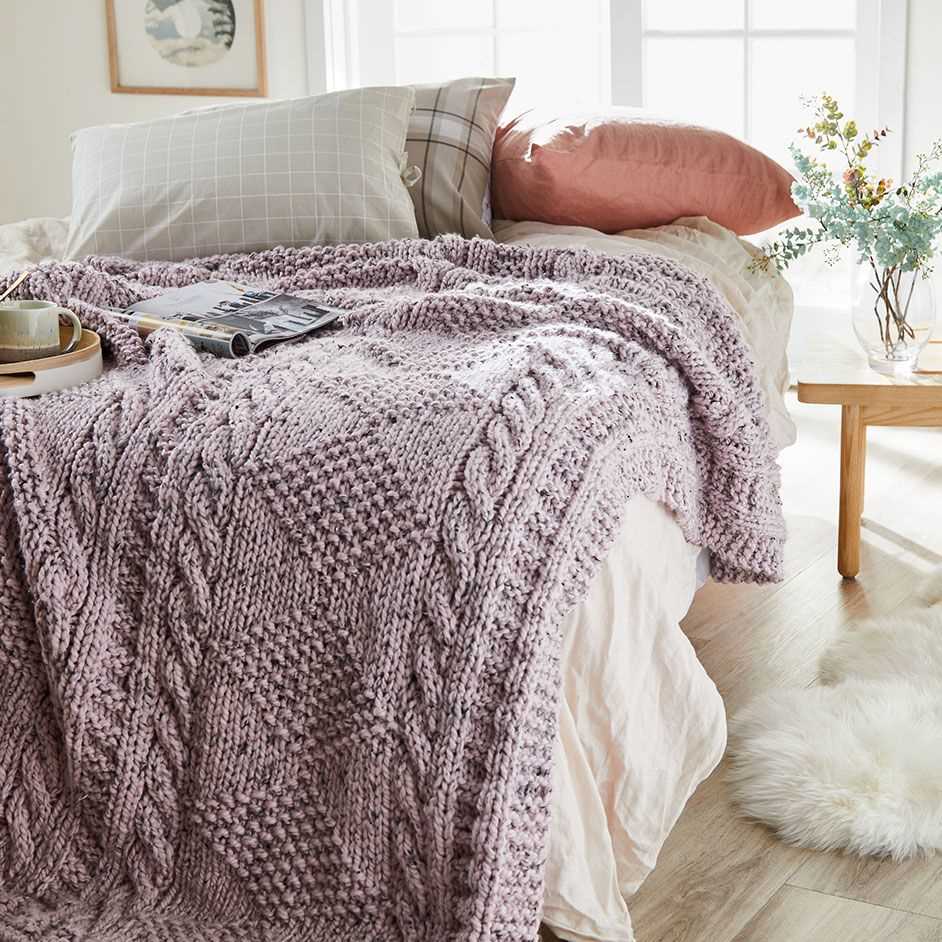
A cable knit weighted blanket offers a visually appealing design that showcases intricate cable patterns. By incorporating cables into your blanket, you can create a stunning texture and dimension. The cables add an extra touch of coziness and warmth, making the blanket even more inviting. This pattern requires intermediate knitting skills but is well worth the effort for the beautiful end result.
Color Block Knitted Weighted Blanket
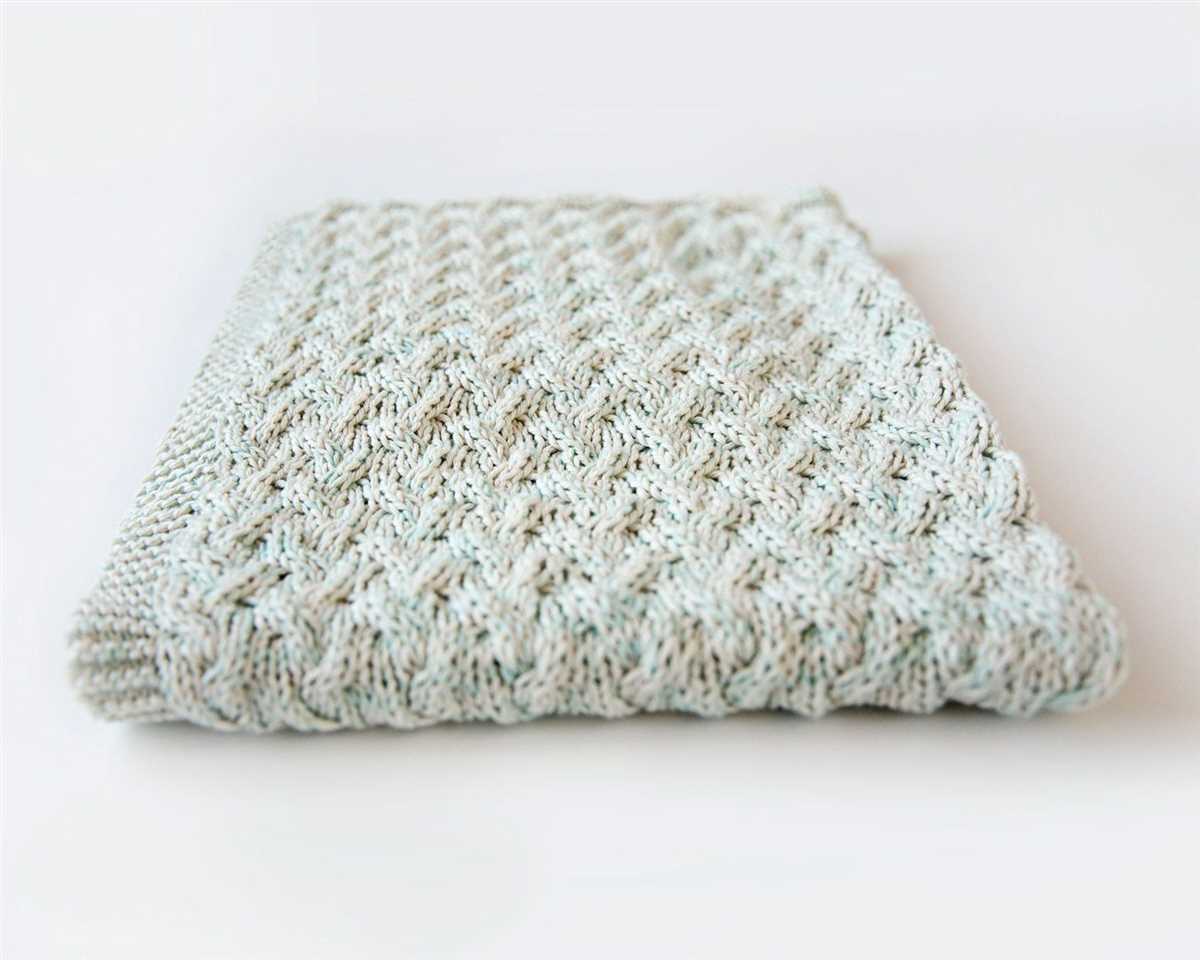
If you’re looking to incorporate multiple colors into your weighted blanket, consider a color block pattern. With this technique, you can divide the blanket into sections of different colors, creating a visually pleasing and modern design. By choosing complementary or contrasting colors, you can make your blanket truly stand out. Additionally, color blocking allows for customization and personalization, making each blanket a unique creation.
Seed Stitch Weighted Blanket
The seed stitch is a simple yet effective pattern that can be used to add texture and visual interest to your weighted blanket. This stitch is achieved by alternating knit and purl stitches in a specific pattern. The result is a subtly nubby texture that creates a cozy and comforting feel. The seed stitch pattern is versatile and can be adapted to different weights and sizes of blankets, making it a popular choice among knitters.
Striped Knitted Weighted Blanket
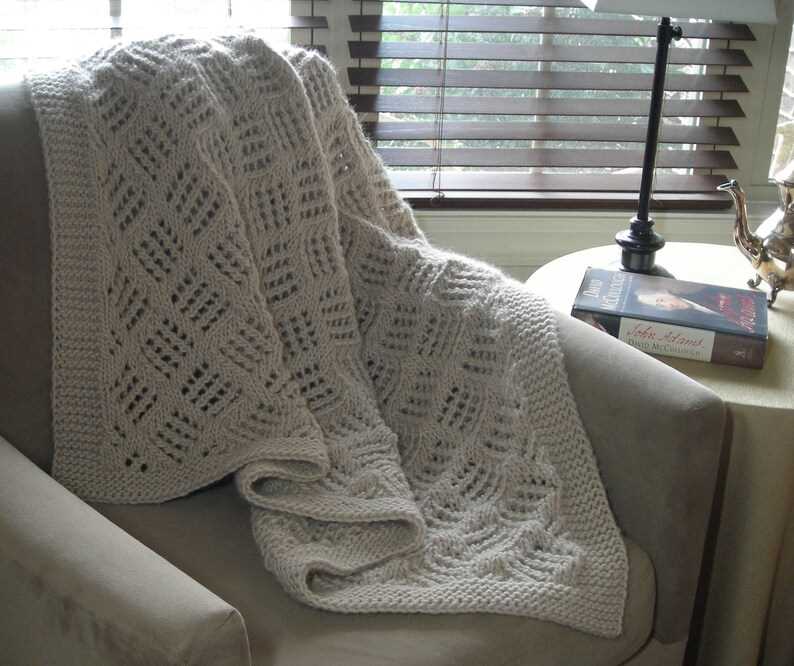
If you prefer a more minimalist design, a striped knitted weighted blanket may be the perfect choice. By using alternating colors or shades of the same color, you can create simple yet visually appealing stripes. The stripes can be wide or narrow, depending on your preference, and can be placed horizontally, vertically, or diagonally. This pattern is easy to customize and can be adjusted to match any color scheme or decor style.
When choosing an alternative pattern or technique for your knitted weighted blanket, consider your personal style and preferences. Whether you prefer intricate cable patterns or simple stripes, there is a pattern out there that will suit your needs. Get creative and experiment with different textures and designs to create a truly unique and comforting weighted blanket.
Caring for Your Knit Weighted Blanket: Washing and Maintenance Tips
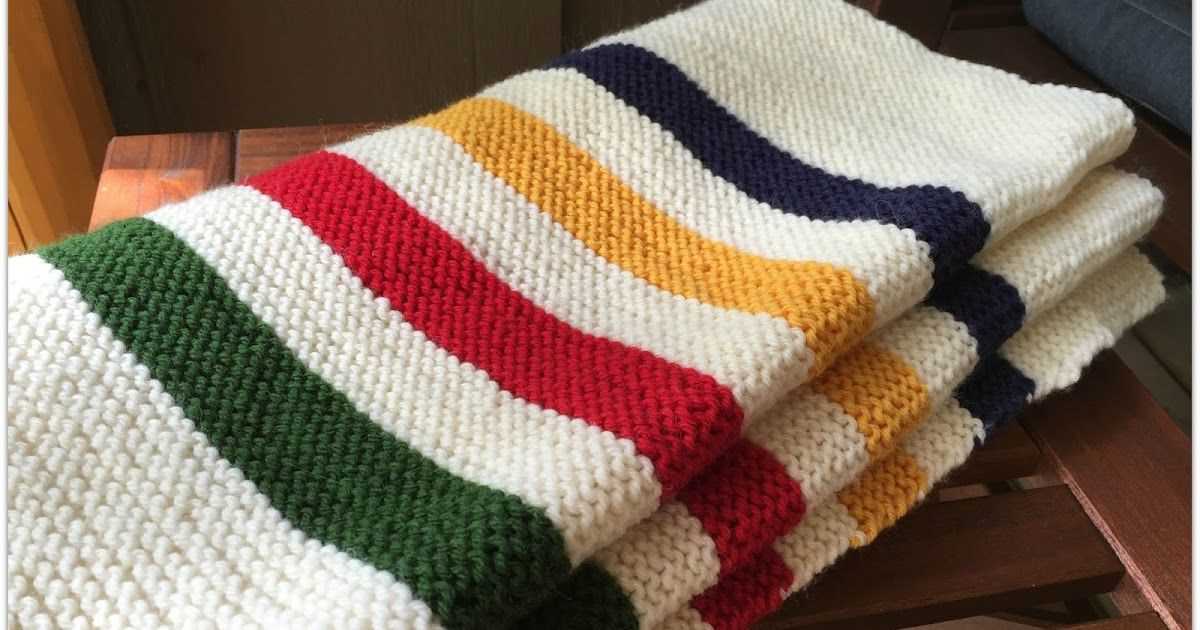
Knit weighted blankets are not only cozy and comforting, but they also require special care to maintain their softness and durability. Here are some tips on how to properly wash and maintain your knitted weighted blanket.
1. Handwashing
It is recommended to handwash your knitted weighted blanket to avoid any damage or stretching. Fill a bucket or sink with lukewarm water and add a gentle detergent suitable for wool or delicates. Submerge the blanket and gently agitate it to release any dirt or grime. Rinse thoroughly and gently squeeze out the excess water without wringing or twisting the blanket. Lay it flat on a clean towel or drying rack to air dry.
2. Machine Washing
If your knitted weighted blanket is labeled as machine washable, use a gentle cycle with cold water and a mild detergent. Place the blanket in a laundry bag or pillowcase to protect it from snagging or tangling. Avoid using bleach or fabric softener, as these can damage the fibers. Once the cycle is complete, remove the blanket promptly and lay it flat to air dry.
3. Spot Cleaning
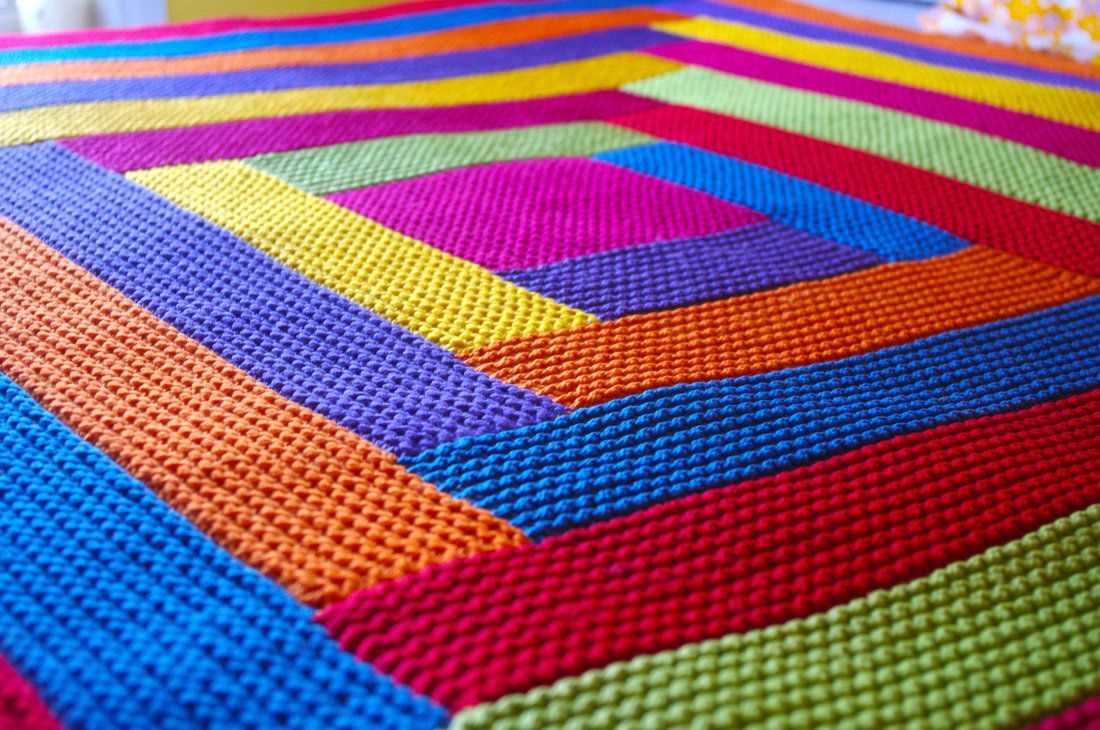
If you only need to clean a small area of your knitted weighted blanket, spot cleaning is the best option. Use a mild detergent or stain remover and gently blot the affected area with a clean cloth or sponge. Avoid rubbing or scrubbing, as this can cause the stain to set or damage the delicate fibers. Rinse with clean water and allow the area to air dry completely.
4. Storage
When not in use, store your knitted weighted blanket in a cool, dry place to avoid any moisture or mold buildup. It is best to fold the blanket neatly and place it in a breathable storage bag or container. Avoid storing the blanket in plastic bags or airtight containers, as this can trap moisture and lead to musty odors or mildew.
By following these washing and maintenance tips, you can ensure that your knitted weighted blanket remains soft, cozy, and in excellent condition for years to come.
Enjoying the Benefits of Your Knit Weighted Blanket: Tips and Tricks
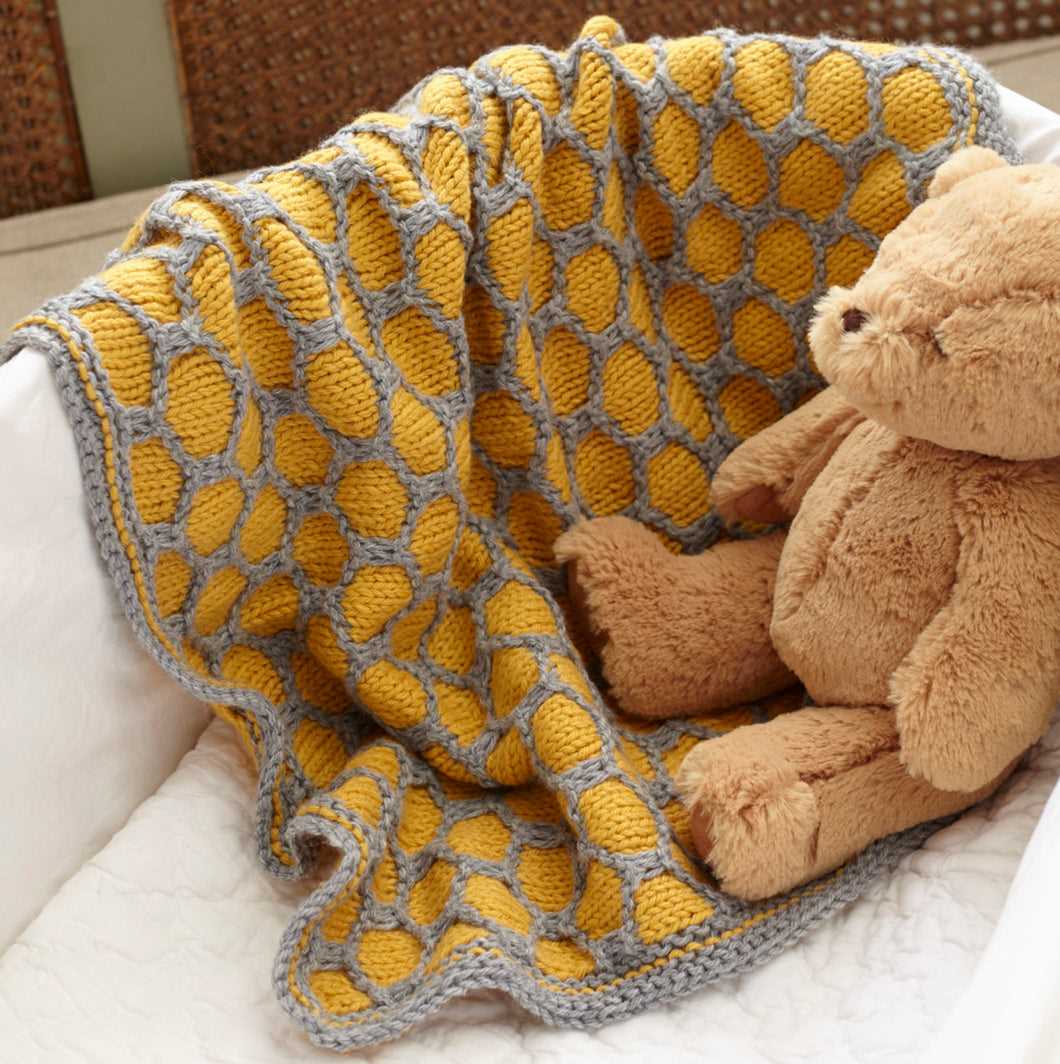
Now that you have your knitted weighted blanket, it’s time to fully enjoy its many benefits. Here are some tips and tricks to help you make the most of your cozy and comforting blanket:
1. Finding Your Ideal Weight
Experiment with the weight of your blanket to find what feels most comfortable for you. Ideally, a weighted blanket should be around 10% of your body weight. Start with a blanket that is slightly lighter and gradually increase the weight if needed.
2. Choose the Right Time
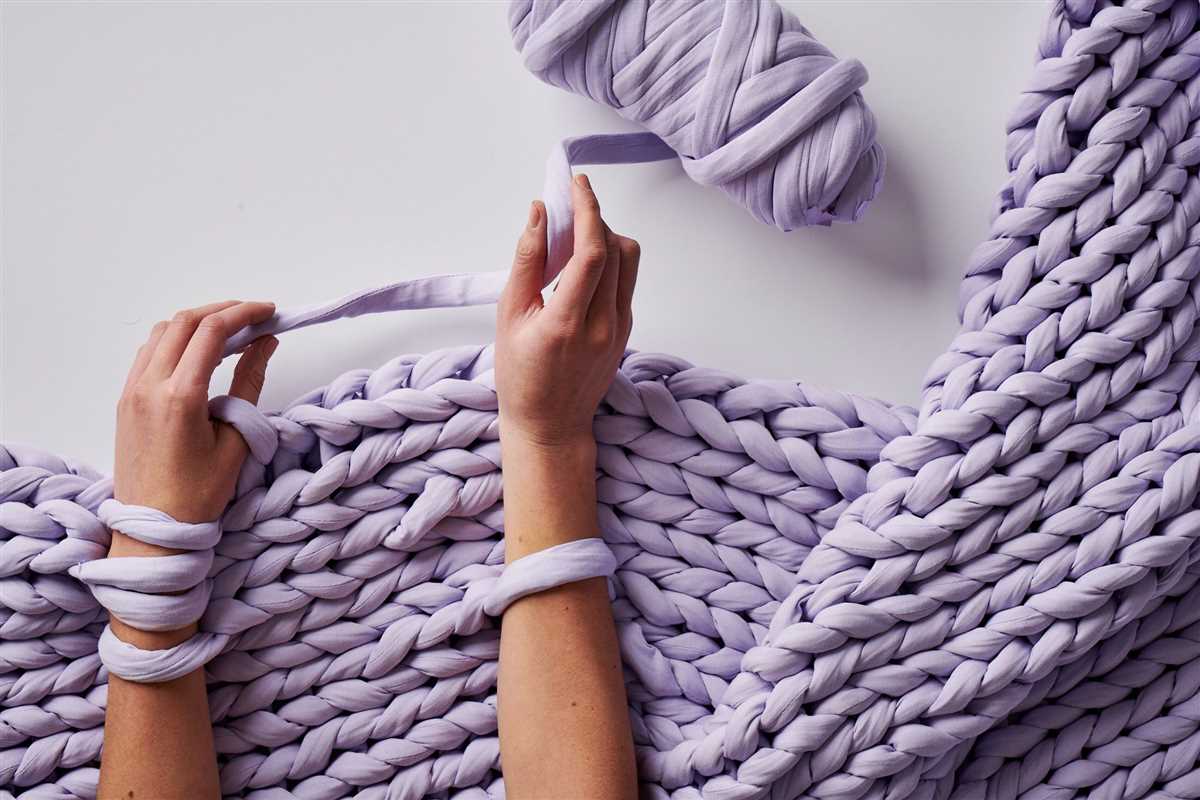
The best time to use your knitted weighted blanket is when you want to relax and unwind. It can be especially beneficial when you’re feeling stressed, anxious, or having trouble falling asleep. Wrap yourself in the blanket during a quiet evening or before going to bed and let it work its magic.
3. Practice Mindfulness
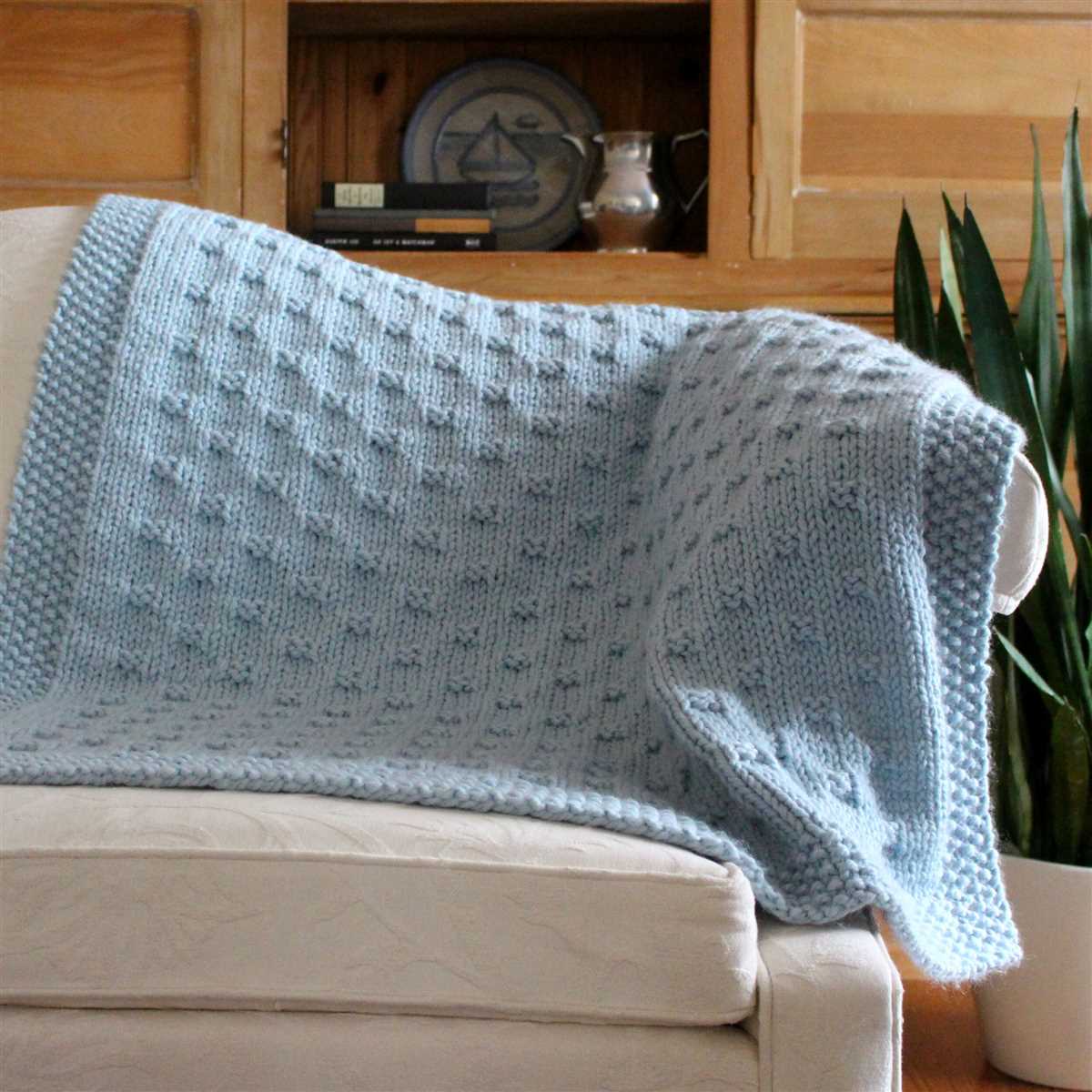
While using your weighted blanket, take some time to practice mindfulness. Focus on your breathing, pay attention to how your body feels, and let go of any tension or worry. The added weight can help anchor your body and promote a sense of calmness.
4. Incorporate it into Your Self-Care Routine
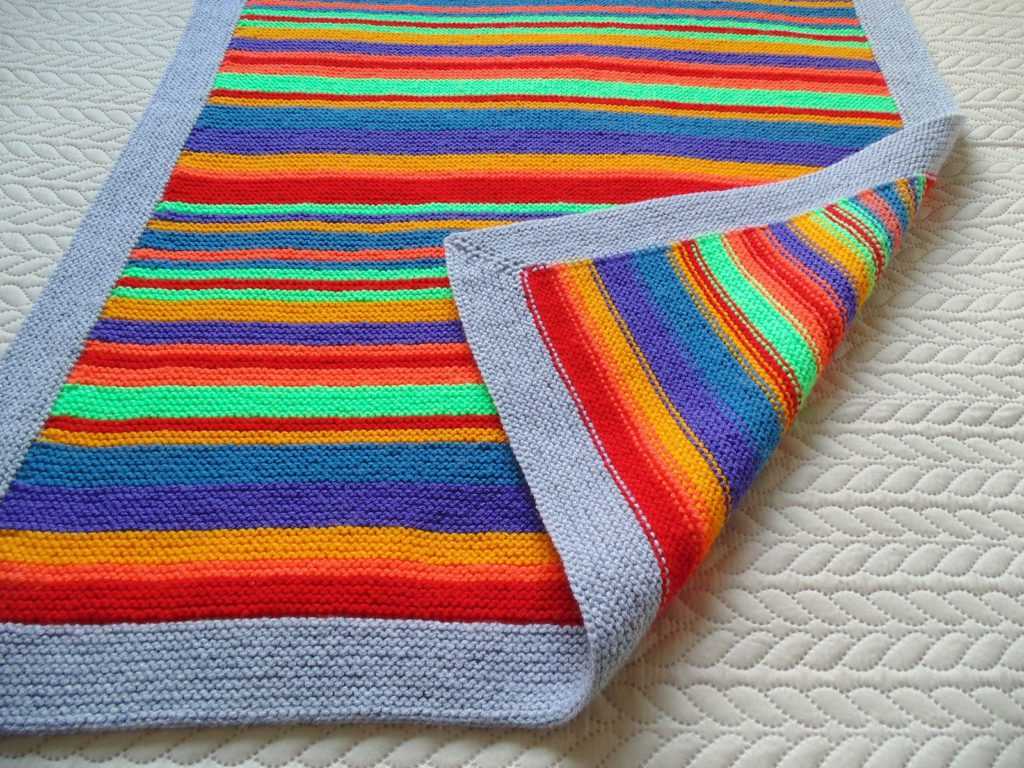
Make your knitted weighted blanket a regular part of your self-care routine. Set aside some dedicated time each day to use it, whether it’s for a quick nap, reading a book, or simply relaxing. The more you incorporate it into your routine, the more you’ll reap its benefits.
5. Care and Maintenance
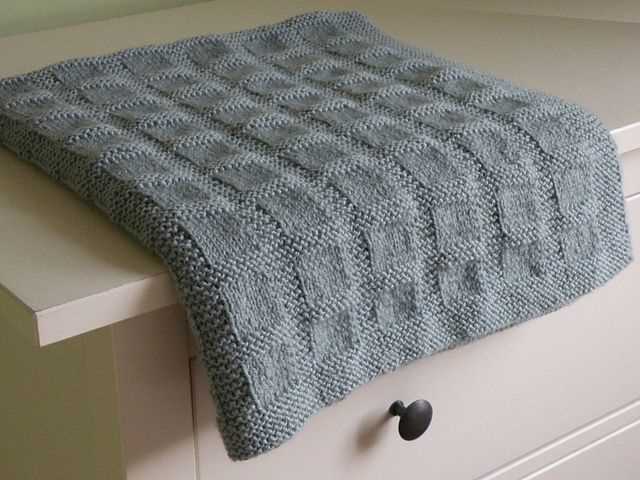
Take good care of your knitted weighted blanket to ensure its longevity. Always follow the care instructions provided with the yarn you used for knitting. It’s recommended to spot clean or hand wash the blanket when needed, and avoid using harsh chemicals or abrasive scrubbing. Gently air dry the blanket to maintain its shape and avoid shrinking.
By following these tips and tricks, you can fully enjoy the benefits of your knitted weighted blanket and create a cozy and comforting atmosphere for yourself. Whether you’re using it for relaxation, stress relief, or better sleep, your blanket will become a cherished companion in your daily self-care routine.
Q&A:
What is a knitted weighted blanket?
A knitted weighted blanket is a type of blanket that is filled with small weights, typically made of glass beads or plastic pellets, that provide gentle pressure and can help promote relaxation and reduce anxiety.
Can I knit a weighted blanket myself?
Yes, you can knit a weighted blanket yourself. There are various knitting patterns available online that provide instructions on how to knit a weighted blanket. It requires basic knitting skills and the ability to work with a heavier weight yarn and larger needles.
What materials do I need to knit a weighted blanket?
To knit a weighted blanket, you will need a heavier weight yarn, such as a bulky or super bulky yarn, larger knitting needles, and weights to fill the blanket, such as glass beads or plastic pellets. You will also need a scale to measure the weight of the blanket as you work on it.
How long does it take to knit a weighted blanket?
The time it takes to knit a weighted blanket will depend on various factors, including the size of the blanket, the knitting pattern used, and your knitting speed. On average, it can take anywhere from a few weeks to a few months to complete a knitted weighted blanket.
Are knitted weighted blankets machine washable?
While some knitted weighted blankets can be machine washed, it is always recommended to check the washing instructions for the specific yarn used and follow them accordingly. In some cases, hand washing or spot cleaning may be the best option to maintain the integrity of the blanket.
What is a knitted weighted blanket?
A knitted weighted blanket is a type of blanket that is made using knitting techniques and filled with weights, such as plastic beads or pellets, to provide a calming and soothing effect.
How does a knitted weighted blanket work?
A knitted weighted blanket works by applying deep pressure stimulation to the body, which can help stimulate the release of serotonin and melatonin, hormones that promote relaxation and sleep.